
Over the last few years, Amazon’s placed a strong emphasis on branded visuals and storytelling within the platform. From expanded A+ Content capabilities to interactive Amazon Storefronts, they continue to roll out features that enable brands to creatively share their unique value with marketplace shoppers.
With Amazon Advertising's rollout of Amazon Posts and other community-building features, it seems they’re taking some serious notes from social channels turned online shopping hubs like Instagram, TikTok, and Facebook. The look and feel of Posts is very similar to what you’d find on social media and acts as a way to share content, engage customers, and drive discovery.
If you’re wondering how to launch and leverage Amazon Posts (and whether or not it’s worth your time to engage customers “socially” on Amazon at all), you’ve come to the right place…
Simply put, if Instagram and Amazon had a baby, it would be Amazon Posts. Brand-registered sellers can now create content and publish it to a shoppable feed directly on the platform.
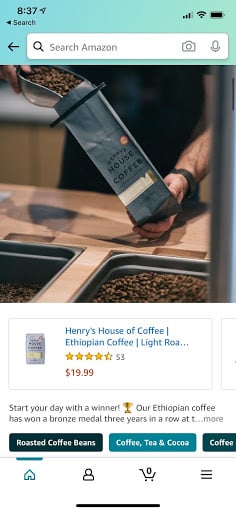 |
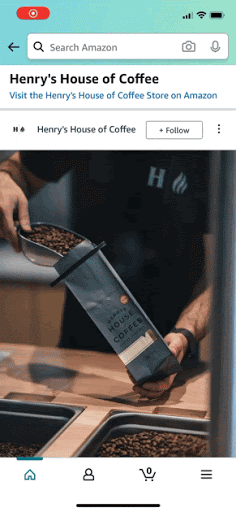 |
Amazon Posts offer sellers a new way to drive product awareness and engagement through image-based browsing. Posts show up in a brand’s feed on Amazon, and they function very similarly to something you’d see on social media. Each Post features product or lifestyle imagery, a short caption, and links back to a product detail page. Just like following a social media account, customers can also choose to “follow” a brand by selecting the Follow button on a brand’s Post or Store page—this allows shoppers to see more of your content on Amazon.
Amazon Posts is currently in beta, meaning certain access and features are limited and can change in the future. As of now, Posts are only available to vendors or sellers in the U.S. who are enrolled in the Amazon Brand Registry program. Posts are also only available on the Amazon mobile shopping app (iOS and Android) and on mobile web.
To qualify for Amazon Posts, you must be:
If you meet all of the above criteria, you can launch and leverage Amazon Posts for free on the marketplace.
Your Amazon Posts can show up in a number of places on the platform—but it’s up to Amazon’s algorithm to decide whether Posts will appear in places other than your brand feed (where each Post is originally published).
Here’s a quick breakdown of where your Posts may appear on the marketplace:
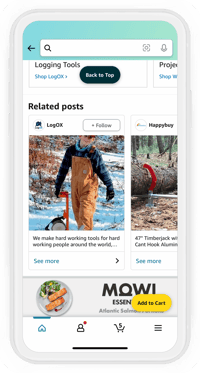 |
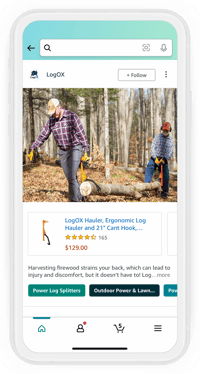 |
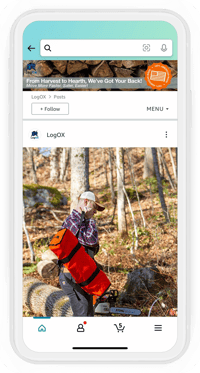 |
| Product Detail Page | Posts Feed | Brand Feed |
The process to sign up is pretty straightforward, but be sure to read through Amazon’s Posts Content Guidelines and Acceptance Policies before you begin:
Pro Tip: You’ll want to have a solid “social” schedule and brand marketing (lifestyle and product imagery, creative, messaging, etc.) in place before taking advantage of Amazon Posts—or you’ll be wasting your time. More best practices below.
Understand the anatomy of an Amazon Post: First, master the basics. An Amazon Post consists of:
Professional product and lifestyle photography: Posts are entirely dependent on your imagery. Shoppers scroll through feeds and product listings quickly, so your graphics should be authentic enough to stop them in their tracks and cohesive with the rest of your content and branding.
Build a solid brand marketing strategy: Just like social media, don’t dive headfirst into Amazon Posts without understanding your audience, brand differentiators, and competition. This will ensure you’re crafting content that reflects your unique value and connects with exactly the right customers.
Consistency is key: Posts are somewhat evergreen since there isn’t a true timeline. If you make 10 Posts and never post again, you will get engagements in perpetuity—but in our tests, we have seen that Amazon gives more placements to brands who post consistently. So if you only have the bandwidth to Post one month, it’s better than nothing, but you’ll see a much better ROI if you post regularly. Similarly to a standard social strategy, it’s better to post fewer Posts consistently than post a bunch of Posts inconsistently.
Aim for short, relatable, actionable copy. Amazon encourages quick, concise copy (and most social users prefer it!). Keep your Amazon Posts short and in-line with your brand voice. Captions and image text can use hashtags, emojis, and abbreviations—but hashtags show as plain text in a Post and aren’t clickable (yet) like on other social channels. Be sure to use a specific call-to-action, because general “click here” CTA verbiage isn’t allowed by Amazon.
Leverage your existing assets and social content: You don’t have to start from scratch! Leverage your existing lifestyle and product imagery and Amazon graphics in your Posts. Also, pull messaging and content from your other social media channels to keep from having to reinvent the wheel.
Through Amazon Posts Publisher found within the advertising console, Amazon offers brands insights related to Amazon Posts including:
The SupplyKick team has tested Amazon Posts for our brand partners over the past year—and even more recently as newer features and reporting metrics have been added—to prove whether or not Posts have the potential to increase product sales. In a nutshell: Yes they do.
Posts aren’t necessarily the first or even third feature a brand should invest in, but if you have solid creative, content, and brand marketing elsewhere on Amazon, there’s no reason not to start building a brand following on the platform. We recommend proactively launching a strategy around them if you want to build performance insights early and stand out to your customers on the marketplace. If you need help with Amazon Posts strategy and management, let’s talk.
Here are a few reasons why Amazon Posts should be on your radar:
Curious about Amazon Posts and how to excel your brand marketing and sales on the marketplace? Download our Amazon Brand Marketing Lookbook and connect with our team to learn more about our Agency & Wholesale partnerships.
Lorem ipsum dolor sit amet, consectetur adipiscing elit


Sign up to receive our newsletter for growth strategies, important updates, inventory and policy changes, and best practices.
These Stories on Advertising
For press inquiries, please contact Molly Horstmann, mhorstmann@supplykick.com